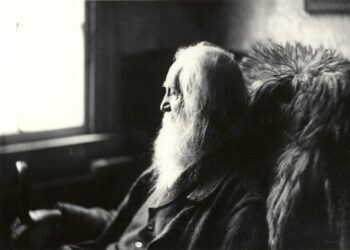Table of Contents
ToggleIntroduction
A Dream Within A Dream Summary By Edgar Allan Poe Edgar Allan Poe’s poem A Dream Within a Dream was first published in 1849, just months before his death. One of the last works he wrote, this poem encapsulates many of the recurring themes that Poe explored throughout his career: the fragility of human experience, the nature of reality, and the haunting sense of loss. Known for his mastery of gothic and melancholic imagery, Poe crafts a narrative that reflects on the illusionary nature of life itself, suggesting that much of what we believe to be real is merely a dream within a dream.A Dream Within A Dream Summary By Edgar Allan Poe
The poem is structured in two stanzas, both of which depict the speaker’s internal turmoil as they grapple with the passage of time and the ephemeral nature of existence. Through poignant imagery and a sense of existential longing, Poe raises profound questions about what it means to live, to love, and to lose. He uses the metaphor of a dream to frame the transient nature of life, where moments and experiences slip away just as quickly as they arise, often leaving us uncertain whether they were ever real at all.A Dream Within A Dream Summary By Edgar Allan Poe
A Dream Within A Dream Summary By Edgar Allan Poe In A Dream Within a Dream, Poe blends the surreal and the philosophical, providing readers with a glimpse into the emotional landscape of someone confronting the impermanence of their world. The poem reflects the Romantic era’s preoccupation with the individual’s internal experiences and the quest for understanding in the face of mortality. In its haunting simplicity, the poem invites readers to question the boundaries between dreams and reality, between what is felt and what is imagined, and whether any of it can truly be grasped or held onto.A Dream Within A Dream Summary By Edgar Allan Poe
Summary of A Dream Within a Dream by Edgar Allan Poe
The poem A Dream Within a Dream opens with the speaker contemplating the fleeting nature of life. The first stanza begins with an intimate moment, where the speaker bids farewell to someone they love. The speaker’s tone is one of sorrow, suggesting that this parting is permanent and irreversible. In the midst of this emotional farewell, the speaker expresses the belief that life itself is an illusion—something that can be experienced but never truly held or controlled. The idea of life as an illusion is reinforced by the metaphor of “a dream within a dream,” which suggests that our existence might be as fragile and fleeting as the images we experience in our dreams.A Dream Within A Dream Summary By Edgar Allan Poe

Poe immediately sets the tone for the poem by describing the scene of parting, with the speaker grasping at the sands of time, unable to hold them in their hand. This imagery of sand slipping through the fingers becomes a central metaphor in the poem, symbolizing the inevitable passage of time and the elusiveness of the things that matter most. The speaker laments that no matter how hard they try to hold onto the moments, they are forever lost. The sand—representing time—slips away, just as life slips through our fingers.
Read More
In the second stanza, the speaker reflects on the painful realization that their grasp on reality is tenuous. The idea that life is a dream is expanded as the speaker expresses doubt over whether anything in life is truly real or if everything is an illusion. There is a sense of hopelessness in this realization, as the speaker questions whether it is even possible to cling to anything in a world where all things are transient. The speaker’s despair deepens as they try to come to terms with the idea that even their most precious experiences may have been nothing more than fleeting illusions—dreams within a dream.A Dream Within A Dream Summary By Edgar Allan Poe
A Dream Within A Dream Summary By Edgar Allan Poe The final lines of the poem present the speaker’s sense of powerlessness in the face of life’s impermanence. There is a haunting moment of recognition that no matter how desperately one clings to the tangible moments of existence, they will eventually slip away, like sand through one’s fingers. The poem ends with an echo of this sorrowful realization, as the speaker is left with the melancholy truth that perhaps everything—life, love, and all experience—is ultimately an illusion.A Dream Within A Dream Summary By Edgar Allan Poe
Themes in A Dream Within a Dream by Edgar Allan Poe
1. The Illusion of Reality
One of the central themes of the poem is the idea that reality is fleeting and unreliable. The speaker compares life to a dream, suggesting that everything we experience may be ephemeral and intangible. This aligns with Poe’s broader literary exploration of the line between the real and the imagined. Throughout his work, Poe often questioned what is real and whether it can ever truly be known, and A Dream Within a Dream is a poignant reflection on that uncertainty.A Dream Within A Dream Summary By Edgar Allan Poe
A Dream Within A Dream Summary By Edgar Allan Poe The poem’s central metaphor—“a dream within a dream”—hints at the notion that not only are our individual experiences fleeting and unreliable, but the larger framework of existence itself might be an illusion. The idea that life could be a dream, nested inside another dream, adds layers of ambiguity, suggesting that our perceptions of reality are constantly shifting and that what we consider to be true may not be so.A Dream Within A Dream Summary By Edgar Allan Poe
2. The Passage of Time
Poe’s poem also contemplates the passage of time and its inevitable effects on human life. The imagery of the sand slipping through the speaker’s fingers serves as a powerful metaphor for the transience of existence. No matter how tightly one holds on, time is unstoppable, and the moments we cherish are as fleeting as grains of sand.
The sense of helplessness in the face of time is evident throughout the poem. The speaker’s attempts to grasp the sand represent the human desire to control or preserve moments, but the inevitable loss is a reminder of the futility of such efforts. This theme speaks to the broader human experience—our struggle to hold onto things that are inherently ephemeral.A Dream Within A Dream Summary By Edgar Allan Poe
Read More
3. Love and Loss
The poem begins with a farewell, suggesting that love and loss are central to the speaker’s experience. The speaker is parting from someone they love, and this loss is compounded by the realization that everything—love, life, and experiences—might be an illusion. This connection between love and loss deepens the poem’s melancholy tone, emphasizing the idea that even our deepest affections are transient.A Dream Within A Dream Summary By Edgar Allan Poe
The speaker’s inability to hold onto the person they love mirrors their larger existential crisis—everything they care about is slipping away, like the sand in their hand. Love, like time, cannot be held onto, and this makes the speaker’s farewell even more tragic. The brief connection between the speaker and their loved one represents the impermanence of all emotional experiences.A Dream Within A Dream Summary By Edgar Allan Poe
4. The Nature of Dreams
The poem’s title—A Dream Within a Dream—suggests a deep meditation on the nature of dreams themselves. In both stanzas, Poe draws parallels between waking life and dreams, suggesting that both might be equally illusory. The speaker’s sense of disillusionment comes from realizing that, much like dreams, their experiences may not be grounded in reality.
The ambiguity of the phrase “a dream within a dream” hints at the possibility that even waking life may be a form of dreaming, with no clear distinction between the two states of consciousness. This blurring of the line between reality and fantasy underscores the fragility of human perception and the difficulty of understanding what is real.A Dream Within A Dream Summary By Edgar Allan Poe

Conclusion
A Dream Within a Dream by Edgar Allan Poe is a deeply philosophical and haunting exploration of the fleeting nature of reality and existence. Through the metaphor of dreams, Poe delves into themes of time, love, loss, and the uncertainty of what is real. The poem’s melancholic tone and introspective nature invite readers to question the permanence of their experiences and the possibility that everything we hold dear may ultimately be illusory. In its simplicity and emotional depth, A Dream Within a Dream remains one of Poe’s most enduring works, offering a timeless meditation on the human condition and the search for meaning in an impermanent world.A Dream Within A Dream Summary By Edgar Allan Poe
Read More
Q: What is the significance of the title A Dream Within a Dream?
A: The title encapsulates the central metaphor of the poem, where life itself is compared to a dream, and the speaker suggests that even that dream may not be real. The title highlights the transient and elusive nature of human experience and the ambiguity of what is real versus what is imagined.
Q: What does the sand represent in the poem?
A: The sand represents time, moments, and experiences that slip away despite our efforts to hold onto them. The imagery of sand slipping through the fingers emphasizes the futility of trying to preserve or control the passage of time. It underscores the poem’s themes of loss and the impermanence of life.
Q: How does Poe use the metaphor of dreams in the poem?
A: Poe uses the metaphor of dreams to explore the idea that reality may be as fleeting and illusory as the images we see in our sleep. The speaker’s sense of helplessness and loss suggests that not only are individual moments transient, but the very nature of existence may be a dream—one within another, without a clear boundary between what is real and what is imagined.
Q: What is the emotional tone of A Dream Within a Dream?
A: The emotional tone of the poem is melancholic, reflective, and filled with sorrow. The speaker grapples with feelings of loss, helplessness, and disillusionment, and the sense of inevitability in the face of time’s passage evokes a profound existential sadness.
Q: What does the poem say about the human condition?
A: A Dream Within a Dream suggests that the human condition is defined by impermanence and the inability to fully control or understand the passage of time. It explores the fragility of life and the fleeting nature of experiences, love, and even reality itself. The poem reflects the sense of existential uncertainty that comes from realizing how little we can hold onto in a world where everything slips away.
Q: What is the significance of the speaker’s farewell in the poem?
A: The farewell at the beginning of the poem introduces the theme of loss and sets the tone for the speaker’s internal reflection. The parting signifies not only the end of a personal relationship but also the larger existential realization that all things are transient. The farewell, though seemingly personal, symbolizes the inevitable losses that everyone must face in life.A Dream Within A Dream Summary By Edgar Allan Poe

















